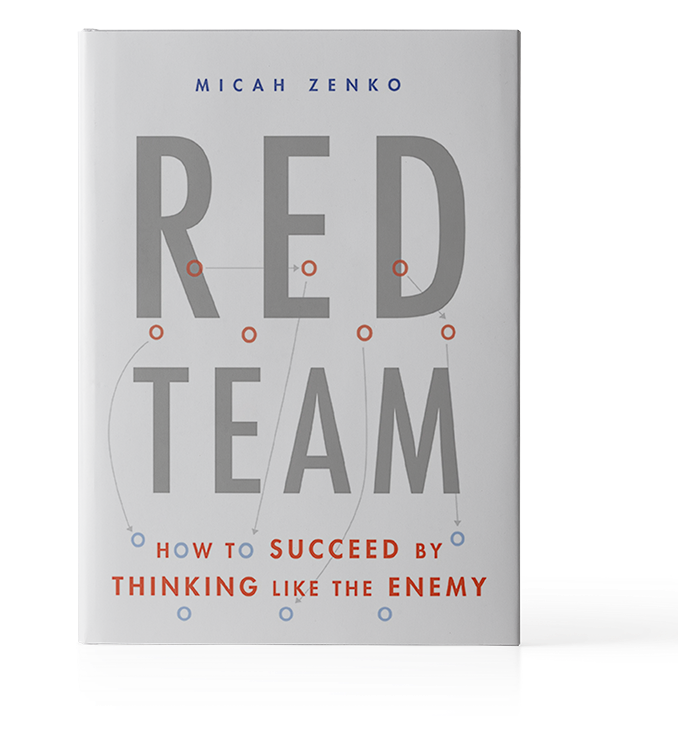Ten years ago, I was fortunate to research and write a book, Red Team: How to Succeed by Thinking Like the Enemy. Grounded in the real-world experiences of more than 100 practitioners, the book outlined the field’s core tenets, historical case studies, and six best practices.
After the book’s publication, I transitioned from being a senior fellow at a foreign policy think tank to a Partner at McChrystal Group, where I apply red team tools and perspectives with a range of corporate, government, and non-profit partners. Each was experiencing unique and nuanced pivot points: product launches, mergers and acquisitions decisions, alternative strategic paths, sweeping policy changes, etc. Each organization needed support to pressure-test assumptions and align around a clear plan of action.
Red teaming in this context is not the work of hackers running advanced cyber or physical penetration tests. Rather, it changes the frame by which leaders make strategic judgements and decisions, so that they are more resilient, inclusive, and ultimately successful.
After a decade of practicing and refining red teaming with organizations across industries, I have seen what makes it effective and what makes it fail. For leaders considering how to use this approach, here are five things every executive should know about red teaming.

01. Blind Spots Are Bigger Than You Think
Most organizations believe that they can identify their own blind spots in their own strategy, plan, product, or idea. This belief stems from all the associated presentations, gate reviews, murder boards, and committee meetings, which collectively feature carefully curated slide decks packed with “facts.”
But these internal processes often create only the illusion of careful vetting. We’ve seen too many times where processes are gamed by savvy advocates, dissenting views are silenced, or vocal leaders signal their personal preference, influencing the final decision. Each of these dynamics—and many others—makes authentic self-assessment nearly impossible.
02. Earlier Is Always Better
The most impactful red team engagements are early and rare. Foreseeable strategic decisions are supported by a project management plan—Gantt Chart, transparent process flow, and timeline. The best time to rigorously pressure-test a decision is as early as possible, literally as soon as a concept can be evaluated. This allows hidden risks to surface and be integrated into corrective actions. Moreover, red teaming should be reserved only for the most novel, complex, and consequential choices or actions—save it for when it is needed and will count.
03. Inclusion Drives Buy-In
The most powerful side-effect of red teaming is in its inclusivity. A solid red team engagement (short-form exercises or multiple-day workshop) should involve a large, broad, and cross-functional group. The involvement of more voices—from all levels and experiences—than routine review processes creates a far greater degree of buy-in and alignment. Rather than simply being told that a strategic decision was made by someone behind closed doors, involved employees see their views heard and reflected. Most strategies fail not in the nouns (outcomes) but in the verbs (execution). Radical inclusivity increases buy-in and execution strength.
04. Know the Culture Before the Tools
You cannot know which red team technique or exercise to use until you understand the organization. Only by asking tough questions, listening intently, or using anonymous surveys can you identify the cultural dynamics affecting sound decision-making. If you presuppose what an organization is experiencing, you will most likely be wrong.
05. Anyone Can Become a Red Teamer
You can train (nearly) anyone to be a proficient red teamer. Leaders who either utilize or offer red teaming training foster divergent thinking and can leverage their workforce to identify risks and missed opportunities. There is a wide array of free resources to help people start to learn and practice basic red teaming, and—once exposed to its powerful impact—they employ this applied critical thinking to any number of discrete challenges. Introducing red teaming signals that leaders value candid communication and divergent thinking. Over time, it shifts organizations from “nice” to candid—and from fragile strategies to resilient execution.
Red teaming is not about slowing down decisions. It is about making sure they are the right ones. When done early, inclusively, and with a clear understanding of the organization, it gives leaders the confidence to move forward knowing risks have been surfaced and execution is aligned. In a world where speed and complexity often collide, red teaming remains one of the most powerful tools leaders can use to stress-test strategy and strengthen execution.




